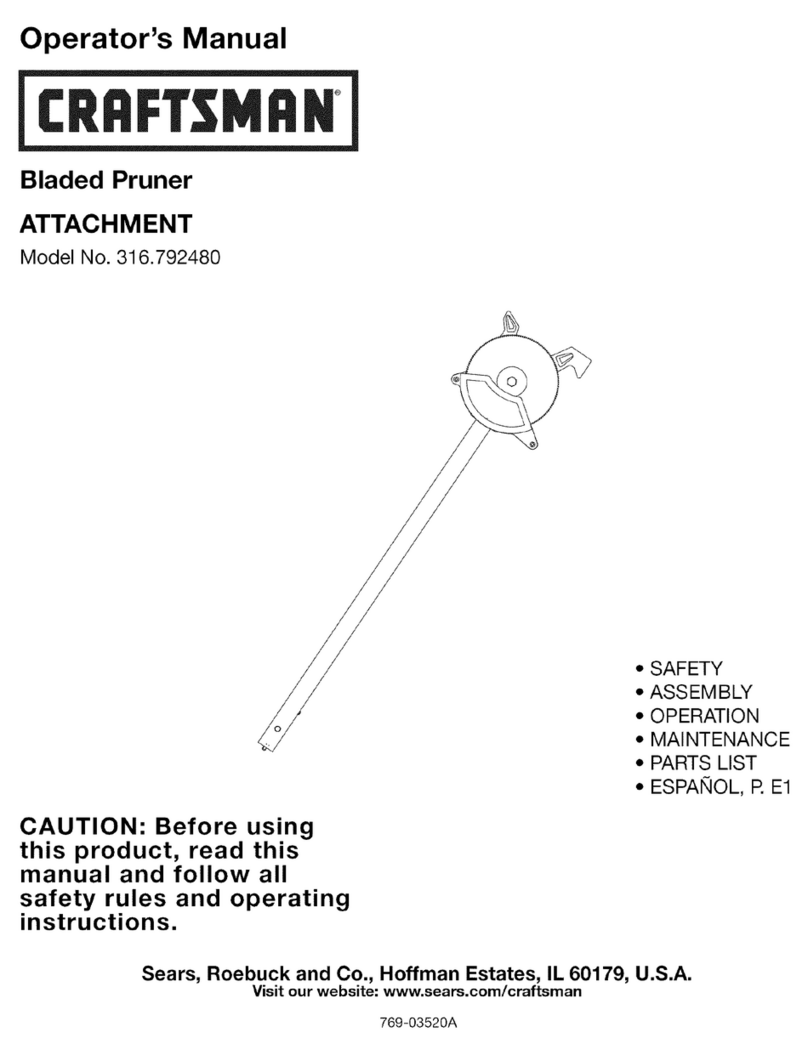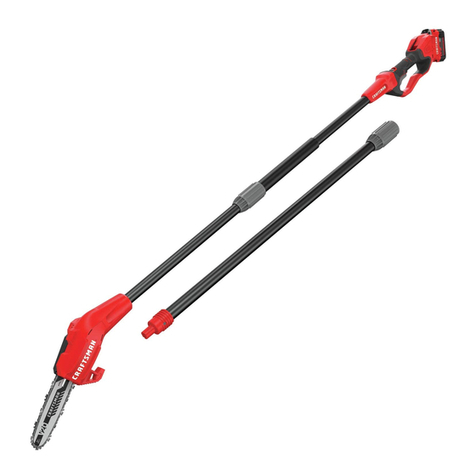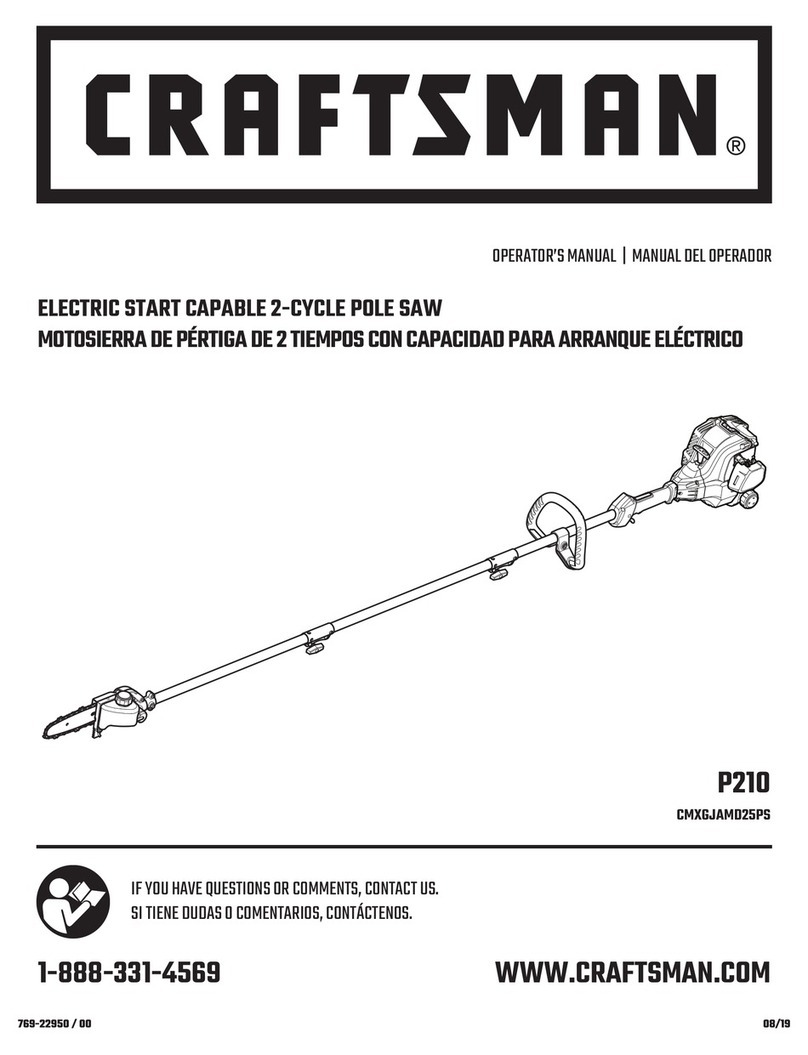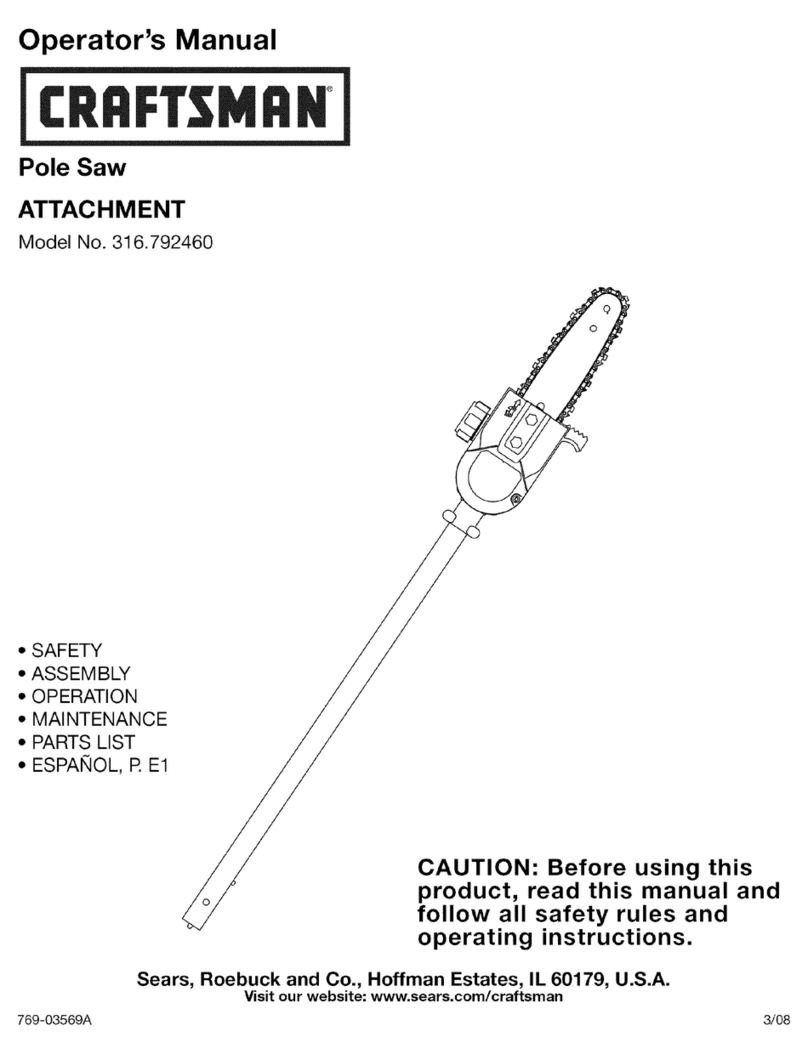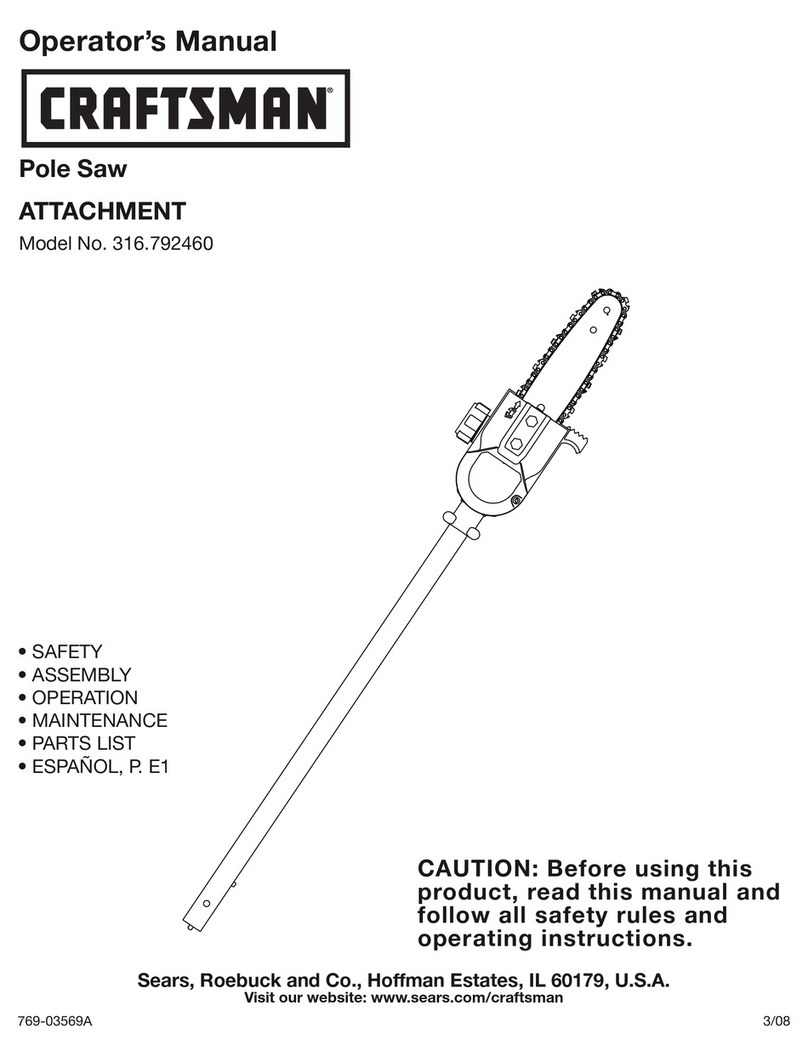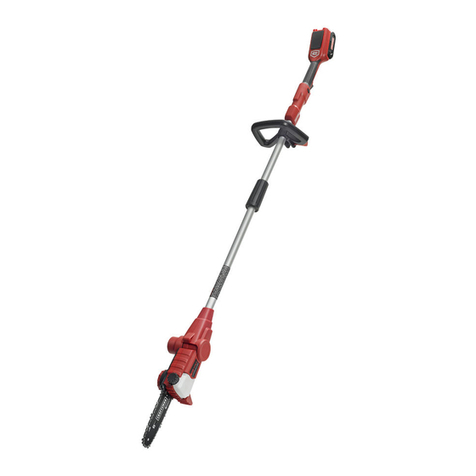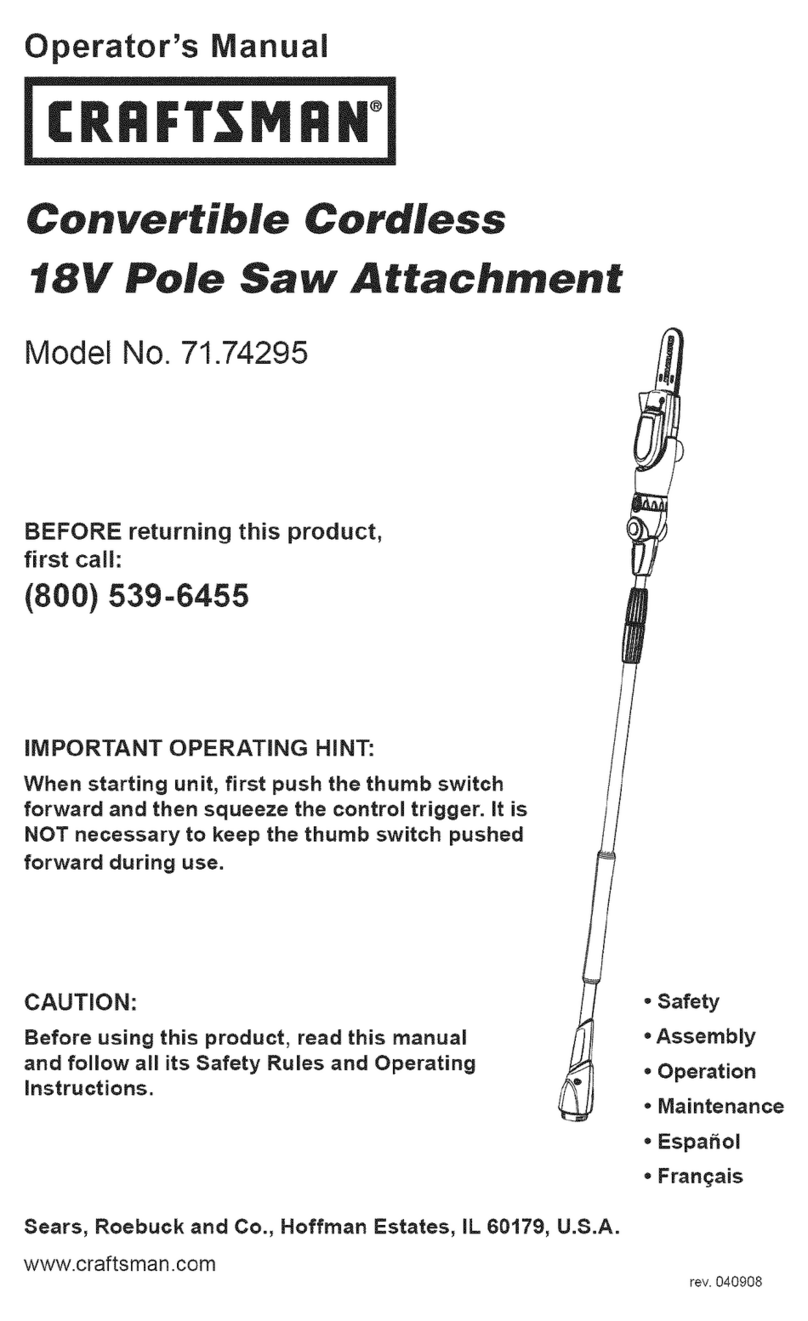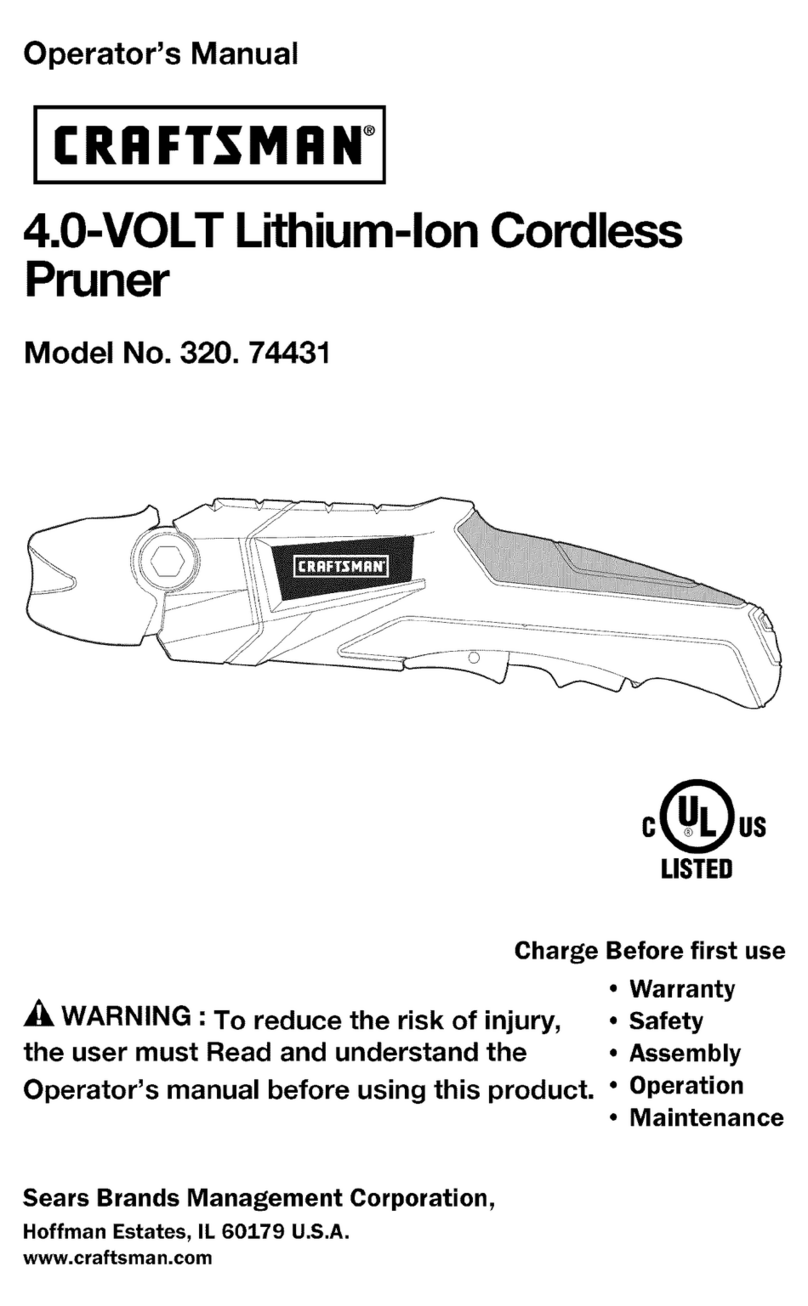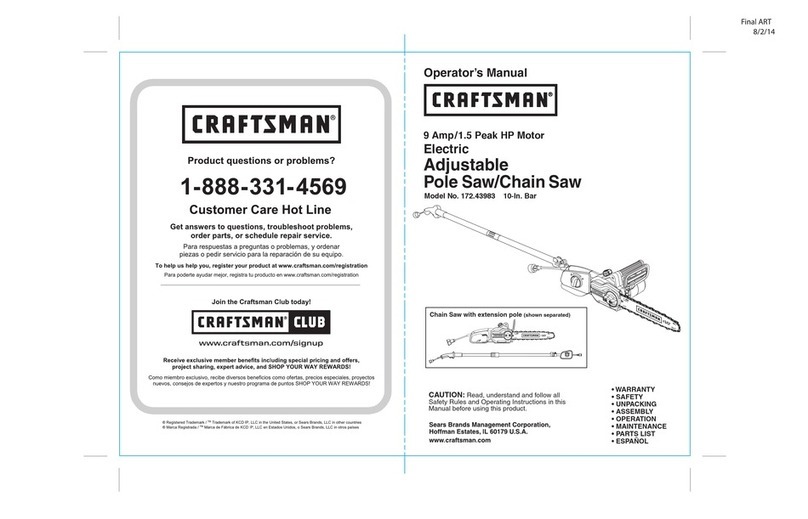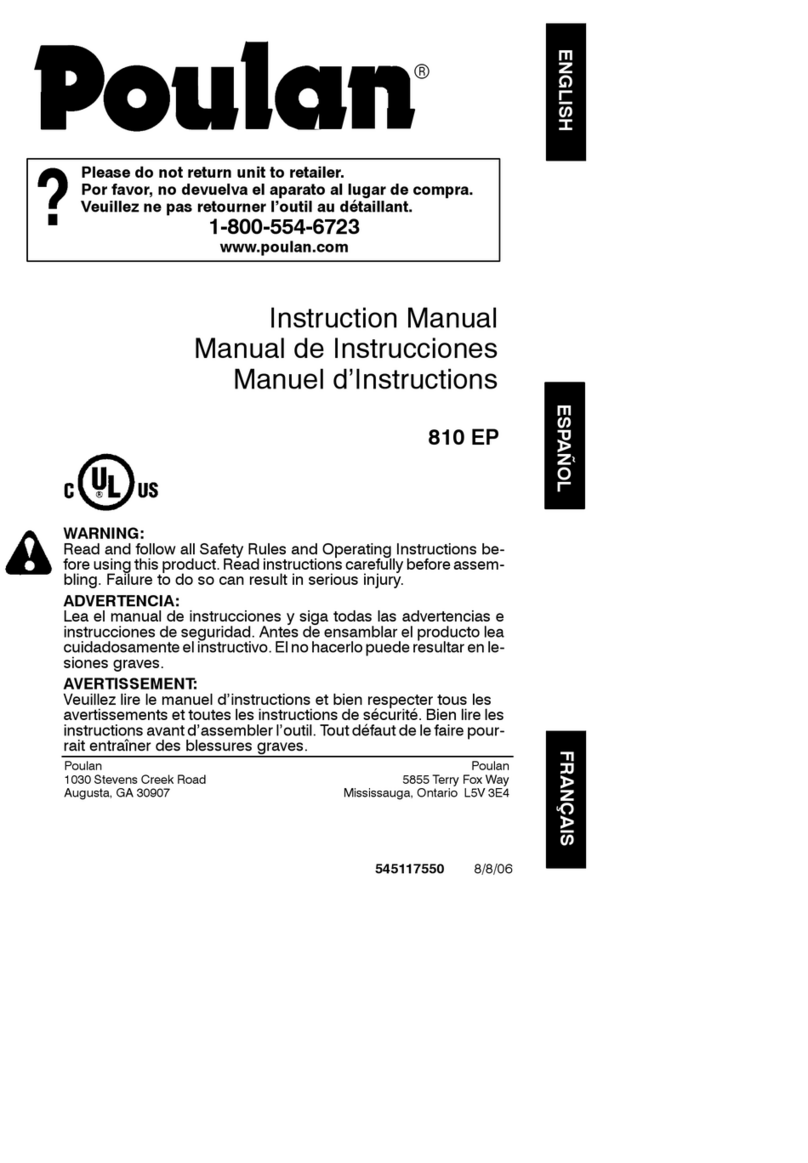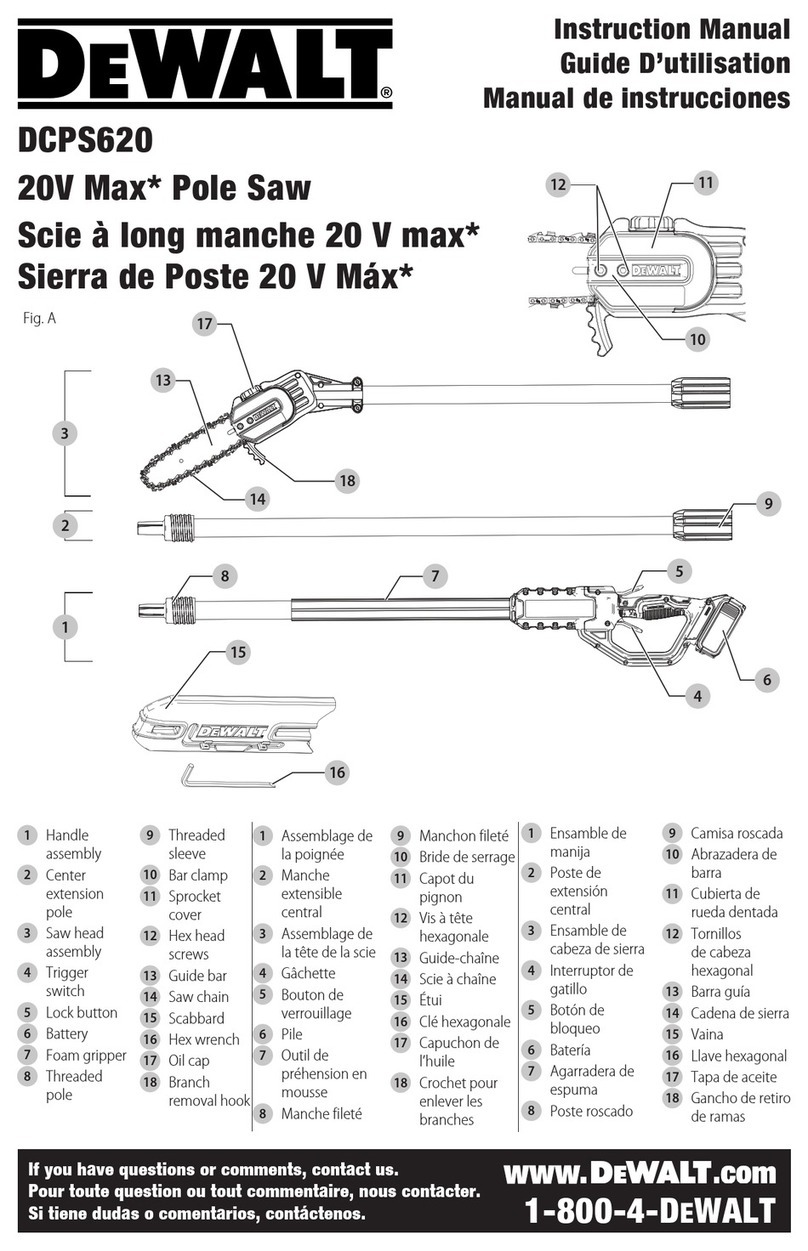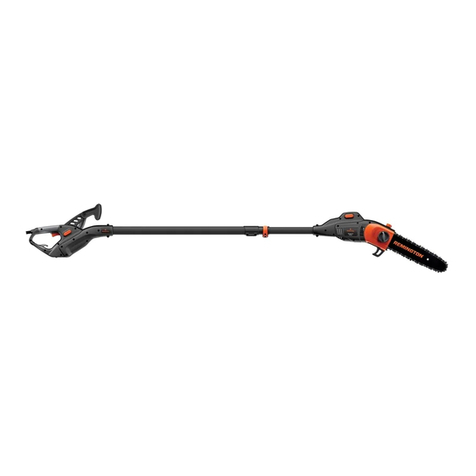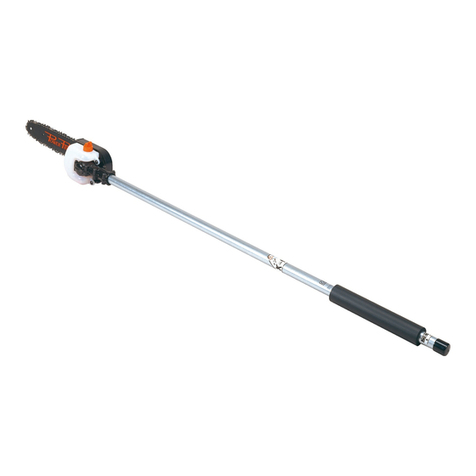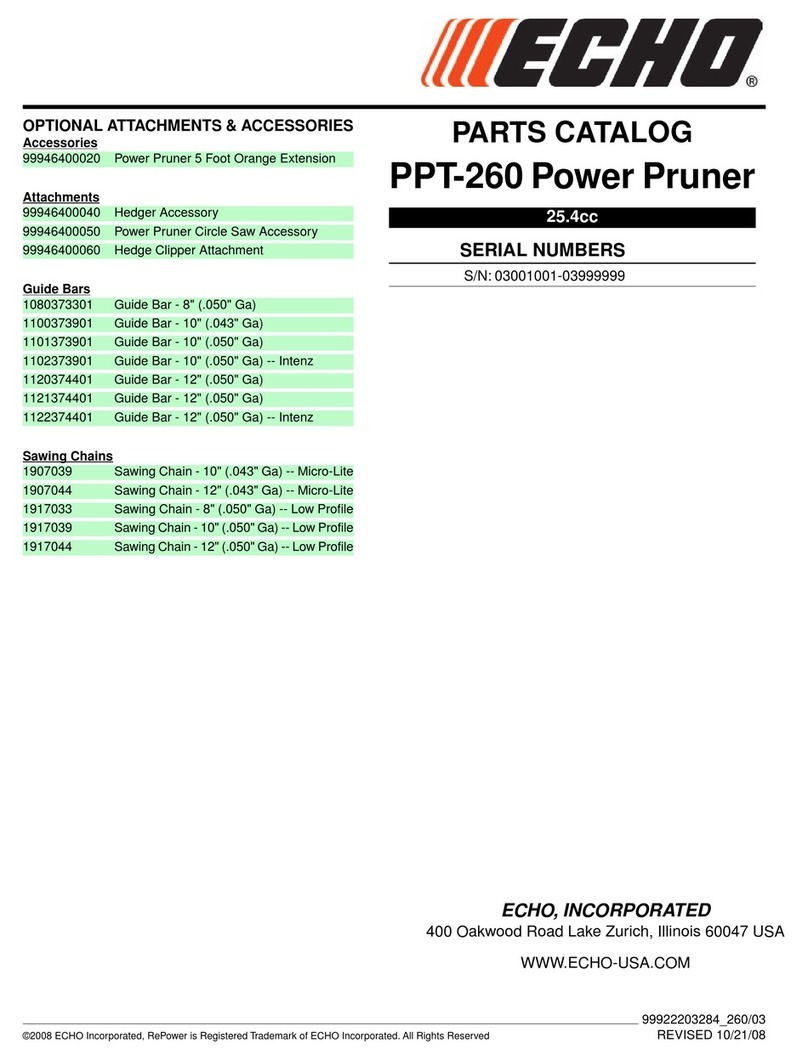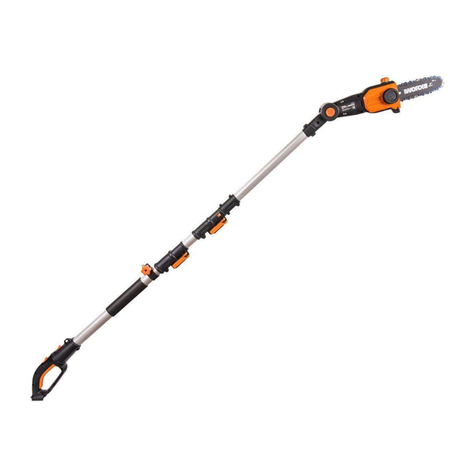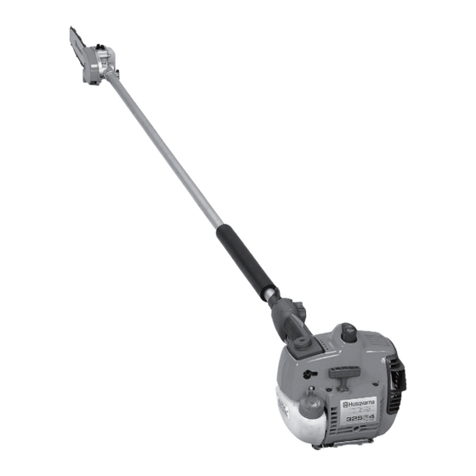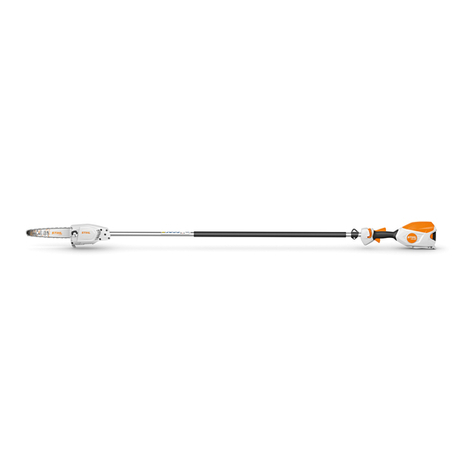4
and when changing accessories and
attachments such as saw chain and
guide bar.
STAY ALERT - Watch what you are
doing. Use common sense. Do not
operate the tool when you are tired.
KEEP ALL PARTS of the body away
from the saw chain when the motor is
operating.
BEFORE YOU START THE SAW,
make sure the saw chain is not
contacting anything.
CHECK DAMAGED PARTS – Before
further use of the pole saw, a part
that is damaged should be carefully
checked to determine that it will
operate properly and perform its
intended function. Check for alignment
of moving parts, breakage of parts,
mounting, and any other conditions
that may affect its operation. A part
that is damaged should be properly
repaired or replaced by an authorized
service center unless otherwise
indicated elsewhere in this instruction
manual.
HAVE DEFECTIVE SWITCHES
replaced by an authorized service
center.
DO NOT USE the pole saw if the
switch does not turn it on and off.
DO NOT OPERATE the pole saw if
it is damaged, improperly adjusted,
or it is not completely and securely
assembled. Be sure the saw chain
stops when the trigger is released.
NEVER OPERATE THE POLE SAW
while standing on a ladder.
DO NOT CUT DOWN TREES with the
pole saw.
BE SURE TO have an escape route
from falling limbs.
ALWAYS ALLOW SPACE for limbs to
fall freely to the ground.
KEEP CHILDREN, BYSTANDERS
and animals at least 50 feet away
when using the pole saw.
NEVER OPERATE the pole saw within
50 feet of overhead electrical lines.
Failure to observe this precaution
could result in severe injury.
NEVER STAND DIRECTLY under
the limb being cut. Falling limbs could
cause severe injury.
KEEP WORK AREA CLEAN
CONSIDER WORK AREA
ENVIRONMENT. Use extreme caution
when cutting small size brush and
saplings because the slender material
may catch the chain and be whipped
toward you or pull you off balance.
WHEN CUTTING A LIMB that is under
tension, be alert for spring-back so that
you will not be struck when the tension
in the wood bers is released.
DO NOT USE pole saw in the rain.
DO NOT USE pole saw in damp or wet
locations.
DO NOT USE pole saw in the
presence of ammable liquids or
gases.
WHEN NOT IN USE, pole saw should
be stored in a dry, and high or locked-
up place – out of the reach of children.
ALWAYS USE THE BLADE
SCABBARD when carrying or storing
the pole saw.
ONLY CUT WOOD with the pole saw.
DO NOT USE the pole saw for
purpose not intended. For example
– do not use chain saw for cutting
plastic, masonry, or non-wood building
materials.
WARNING: KICKBACK may occur
when the nose or tip of the guide bar
touches an object, or when the wood
closes in and pinches the saw chain in
the cut. Tip contact in some cases may
cause a lightning fast reverse reaction,
kicking the guide bar up and back

